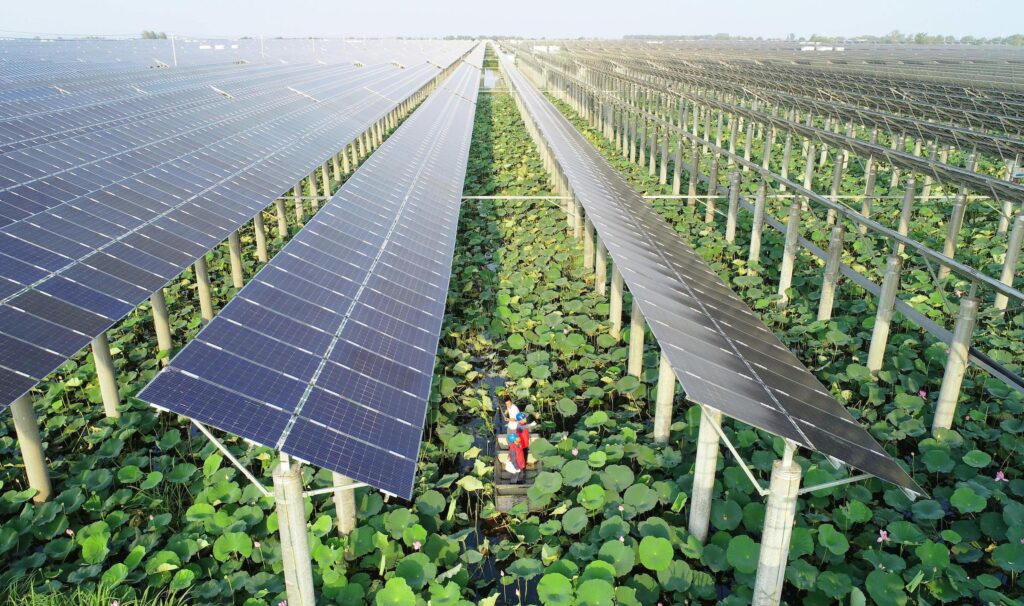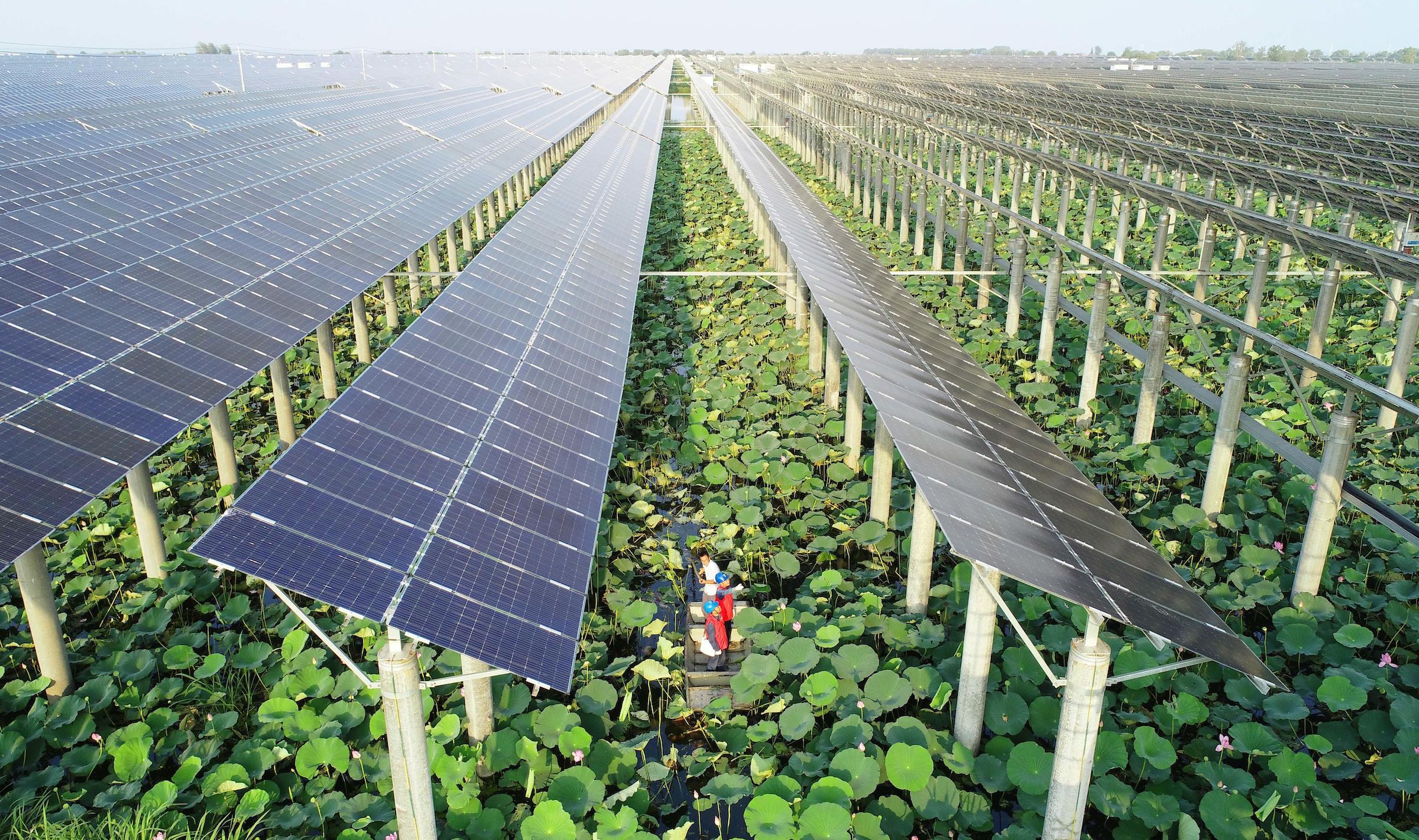The draft bill is a step in the right direction, but falls short on screening the export of fossil fuel technologies.
In May, China’s energy authority announced a public consultation for a draft energy law, setting the agenda for “green, low-carbon” production and a “safe and efficient” energy system. The draft law, which has been 13 years in the making, is an omnibus bill that seeks to unify China’s diverse laws governing coal, renewables and energy conservation.

Five years after the signing of the Paris Agreement, references in the bill that position it as a “response to climate change” are welcome. Unfortunately, the proposed legislation also specifies the need for further exploration of fossil fuel energy sources such as coal, oil and natural gas.
This matters because under the Paris Agreement, China committed to peak carbon dioxide emissions around 2030 or earlier if possible. China is the largest public financer of fossil fuels, providing US$20.2 billion a year for oil and gas and US$4.4 billion for coal, according to a recent report on G20 financing.
China also ranks as the world’s largest producer and investor in clean energy and while coal still occupies the top spot in the country’s energy mix, its share is declining. However, the country’s effort to reduce emissions is being undermined by a relaxation of coal-power restrictions, which has led to approximately 10 gigawatts of new approvals at home and the financing of coal projects overseas.
Exporting emissions
A priority of the draft energy law is improving the regulation of energy exports and imports, including the management and import of “clean” and “advanced” energy technologies. But the bill falls short on exports, as there are no provisions for the screening of fossil fuel products or technologies. This means the bill does not address the “carbon leakage” resulting from China’s export and support of coal technologies and products.
China’s support for fossil fuel projects, such as coal power in countries that are part of the Belt and Road Initiative (BRI) has environmental and social impacts. Changes to the draft energy law are needed to introduce binding climate and export screening criteria for all Chinese exports of fossil fuel projects. This would align such projects with practices commonly accepted by the international community, including multilateral development banks of which China is a member.
The government has made some progress in this area. In 2017, four government regulatory bodies issued an advisory document, “Guidance on Promoting a Green Belt and Road”. This recognised the challenges faced by Chinese companies undertaking overseas infrastructure projects and called on them to adopt higher environmental and social standards.
One concern is the prominent role of Chinese state-owned enterprises specialising in coal power and resource-extraction that are locking BRI countries into high-emissions pathways. China is the top lender and exporter of coal technologies internationally. A plethora of state-owned enterprises, backed by government loans from China Development Bank and China Exim among others, are in fierce competition for projects in Europe, sub-Saharan Africa and Asia. According to Ma Jun, former chief economist of the People’s Bank of China, “BRI countries could account for over half of global CO2 emissions by 2050”.
In Africa, Chinese state-owned enterprises announced two new coal deals in Ivory Coast and Zimbabwe in late 2019. As much as 3.5 gigawatts may be built in Europe, including a new unit for Tuzla’s coal-fired power station in Bosnia and Herzegovina, phase two of a new unit at Kostolac coal-fired power station in Serbia, and the recently announced 350-megawatt Kolubara B coal project also in Serbia.
China’s coal financing runs contrary to international financial institutions such as multilateral development banks that have been phasing out or banning direct coal financing. OECD countries and their export credit agencies, for example, have screening conditions in place for the support of coal-fired power, although in practice these have failed to prevent some financing being permitted.
The energy bill could help address the carbon leakage associated with fossil fuel projects undertaken by Chinese companies overseas. To make that happen, the bill should include measures and standards that prioritise a low-carbon energy transition that applies to domestic consumption and production, as well as investment, import and export of energy products and technologies. This green roadmap would define the incentives and restrictions for all energy projects, including coal power, gas and oil extraction, and transportation across boundaries.
Transboundary projects
Transboundary energy projects include pipelines, transmission lines and associated facilities. Several projects have been built without meaningful transboundary assessments of their environmental and social impacts, including the Sino-Myanmar oil and gas pipelines, the Kazakh-China oil pipeline and the Central Asia-China gas pipeline. There are no environmental and social management plans in place to mitigate their damage to ecosystems or restoration plans for the environments and communities affected.
The draft energy law recognises a need to scale up regulatory oversight, particularly by the National Energy Administration (NEA) and the State-owned Assets Supervision and Administration Commission of the State Council (SASAC). The bill is silent on the role of the Ministry of Ecology and Environment, which regulates climate and environment matters and is host to the “Green Belt and Road Initiative Centre”.
SASAC oversees state-owned enterprises, many of which are energy and power generation companies. Some of these, such as China National Petroleum Corporation (CNPC), have vested interests in transboundary energy projects that transport oil and gas tapped outside China’s borders into China for domestic consumption.
Gas from Myanmar first entered China through a 1,420-km transboundary pipeline in 2013, and crude oil started arriving in 2017. The pipelines have resulted in conflict in northern Myanmar and led affected communities to protest about environmental degradation, loss of livelihoods and conflicts resulting from the acquisition of land.
Kazakhstan is another key oil and gas source for China. CNPC operates many projects in the country including five major oil fields and the Kazakh-Sino crude oil and gas pipelines. The hydrocarbons tapped from these operations are transported east to China through the Sino-Kazakhstan oil and gas pipeline. It is not clear if the Chinese government had conducted an evaluation assessing the environmental and social impacts for the Sino-Kazakh pipeline or for CNPC’s oil and gas explorations for Chinese domestic consumption. This is because China does not require companies or banks financing projects to disclose environmental and social impact assessments for overseas projects, and CNPC has refused to provide information.
In 2008, the Kazakh media started reporting on environmental violations caused by oil and gas production for export to China. Starting in 2012, Kazakh public authorities found CNPC oil exploration activities to be in violation of Kazakhstan’s environmental law. Local authority investigations found repeated violations by CNPC that exceeded the maximum limits of petroleum pollutants in freshwater reserves. In addition, four CNPC oil wells caused long-term soil and surface-water pollution. Kazakhstan’s national environmental monitoring between 2010-2014 also confirmed that water pollution caused by CNPC’s exploration activities was found to have caused excess oil products in groundwaters at 3 to 42 times the maximum limits, thus affecting the groundwater quality of the Kokzhide massif, one of the largest underground freshwater sources in the country. Several communities living on the edge of CNPC oil operations in Kazakhstan have been forced to rely on truck deliveries of drinking water from the company after it contaminated local groundwater.
The environmental violations resulting from oil and gas pipelines and overseas investment projects highlight why China needs a comprehensive approach to governing its overseas and transboundary energy projects. Chinese lawmakers can rise to this challenge by introducing legal requirements for strategic environmental assessments and environmental impact assessments for transboundary energy projects. They should also require Chinese companies involved in such projects to register and request approval for overseas energy projects from China’s top regulatory bodies – the Ministry of Commerce and the National Development and Reform Commission. They would be responsible for signing off overseas operations and investments, including the issuance of Chinese bank loans.
An energy law fit for purpose?
Solving the global climate crisis will need China in the driving seat. The energy bill shows that the government wants to increase control measures for both the import and export of energy technologies, even if the reference to clean energy is limited to imports for the time being. However, by focusing mostly on domestic energy policy, the draft energy law neglects the importance of tackling the carbon footprint that China is creating in BRI countries through its financing and construction of high-carbon infrastructure.
In the wake of the coronavirus, it is not inconceivable that the central government would seek to stimulate an economic recovery by relaxing environmental regulations and hesitating on costly measures to peak carbon emissions. As China and countries signed up to the BRI focus on repairing economies damaged by the pandemic, it may seem like wishful thinking to expect policy decisions to be compatible with the goals of the Paris Agreement.
China’s overriding interest may be to keep BRI projects on course. This may mean the exclusion in the final energy law of recommendations arising from the energy bill public consultation to establish screening criteria for fossil fuel projects, binding requirements for strategic environmental assessments for transboundary projects, and proper review of the impacts of overseas energy investments.
Deliberations over China’s 14th Five Year Plan, which is in development, will be telling. The plan serves as a policy compass for the next five years and is anticipated to outline China’s targets for the installation of coal-power capacity as well as decarbonisation.
The draft energy law touches on the export of energy and transboundary projects but doesn’t go far enough. If China is committed to greening the BRI then aspirations need to be turned into statutory requirements. The government must bring an end to investments in high-carbon energy projects and address the fragmented regulation of overseas projects. This should include drafting an outbound investment law and amending the environmental impact assessment law, which is currently limited to projects inside China.
Whatever happens, as the world’s largest carbon emitter today and enabler of so many new coal projects, China’s decisions will have impacts for generations to come.





